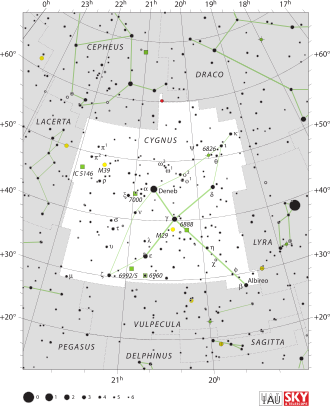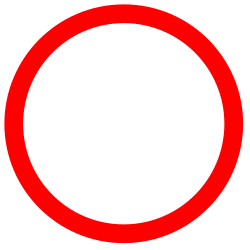NGC 7380
| Offener Sternhaufen NGC 7380 | |
|---|---|
 | |
| AladinLite | |
| Sternbild | Schwan |
| Position Äquinoktium: J2000.0 | |
| Rektaszension | 22h 47m 21,0s [1] |
| Deklination | +58° 07′ 57″ [1] |
| Erscheinungsbild | |
| Klassifikation | IIIpn [2] |
| Helligkeit (visuell) | 7,2 mag [2] |
| Physikalische Daten | |
| Zugehörigkeit | Milchstraße, Perseusarm |
| Entfernung | (10250 ± 1100) Lj (2145 pc) |
| Durchmesser | 100 Lj |
| Geschichte | |
| Entdeckt von | Caroline Herschel |
| Entdeckungszeit | 7. August 1787 |
| Katalogbezeichnungen | |
| NGC 7380 • C 2151+470 • Cr 452 • GC 4842 • H VIII 77 • h 2182 • Nebel: Sh2-142, LBN 511, Sternhaufen: OCl 244, Lund 1022 | |
NGC 7380 bzw. Sh2-142, auch Zauberernebel (engl.: Wizard Nebula) genannt, ist ein galaktisches Sternentstehungsgebiet, wobei DH Cephei (HD 215835) die Ionisationsqeulle ist, im Sternbild Kepheus. Das Gebiet enthält einen jungen Offenen Sternhaufen, ist rund 10.250 Lichtjahre entfernt und weist eine Ausdehnung von etwa 150 Lichtjahren auf.
Er wurde am 7. August 1787 von Caroline Lucretia Herschel entdeckt.[3]

Literatur
- König, Michael & Binnewies, Stefan (2023): Bildatlas der Sternhaufen & Nebel, Stuttgart: Kosmos, S. 167
Weblinks
Einzelnachweise
Auf dieser Seite verwendete Medien
Opaque red circle
Autor/Urheber: Hewholooks, Lizenz: CC BY-SA 3.0
Sh2-142 NGC7380 in Hubble Palette Ha/OIII/SII with amateur equipment
Autor/Urheber: IAU and Sky & Telescope magazine (Roger Sinnott & Rick Fienberg), Lizenz: CC BY 4.0
IAU Cygnus chart
This picture of the open star cluster NGC 7380 is a mosaic of images from the WISE mission spanning an area on the sky of about 5 times the size of the full Moon. NGC 7380 is located in the constellation Cepheus about 7,000 light-years from Earth within the Milky Way Galaxy. The star cluster is embedded in a nebula, sometimes called the Wizard Nebula, which spans some 110 light-years. The stars of NGC 7380 have emerged from this star forming region in the last 5 million years or so, making it a relatively young cluster.




